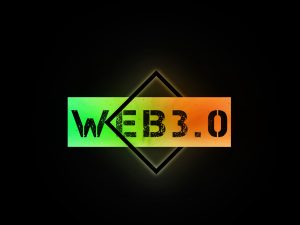Web3 refers to a vision of the internet based on public blockchains. It is the evolution of Web 2.0, which allowed user participation in the flow of information, and is picking up speed, particularly in the realm of blockchain as well as metaverse business.
But nevertheless, it is not a popular term among the masses, and people in general are not aware of it.
So, this article will explain the pros of mass adoption by Web3, key use cases, and its future outlook.

What is Web3 (Web 3.0)?
Before the arrival of Web3 (Web 3.0), the internet world went through Web 1.0 and Web 2.0. What are Web1.0, Web2.0, and the new-age Web3.0, and what do they have, how are they formed, and why were they made? We will explain each of them in detail.
Web1.0
Web1.0 refers to the first internet technology, services, and ideas of the web that were provided on the web for about a decade, starting about 1995 with Windows 95, until the emergence of Web 2.0.
Attributes of Web1.0 are users using the web predominantly through PCs, and content being predominantly text and static images. No interactive components like SNS or blogs existed.
Examples of Web1.0 are banner ads, trading in domain names, and page views. Though they are products of typical web services and business models, most of them exist even today as fundamental web services and make significant contributions to corporate development.
Web2.0
Web 2.0 refers to a general term used to refer to internet-related technology, service, and business models that not only involve technological innovation but also active participation of the user and company. It was primarily used for web services that began to emerge between 2005 and 2020.
Unlike Web1.0 in which pictures and text were predominant, Web2.0 is characterized by multimedia content such as audio and video becoming mainstream.
It also includes frictionless technologies and services that enable voluntary user interaction and two-way communication among users and providers of services.
Good examples of Web2.0 include Google AdSense, Wikipedia, blogs, social media, and SEO.
Web3
No clear definition yet exists, but Web3 is defined as technologies and services that are based on a decentralized web that employs open, public blockchains to eliminate the need for centralized managing organizations.
The term “Web3” was coined for the first time by Gavin Wood, the co-founder of the cryptocurrency Ethereum, in 2014.
Subsequently, with the emergence of newer technologies like the metaverse and Non-Fungible Tokens (NFTs), the term became of interest to crypto fans, IT companies, and venture capitalists in 2020 and 2021.
From an infrastructure perspective, Web3 has two primary characteristics.
First, it employs blockchain to enhance performance and security for the purpose of supporting verifiable computing. Secondly, through making the verifiable state public, it guarantees a similar functionality compared to centralized platforms.
The benefits Web3, with such features, presents to us are discussed below.
Problems with Web 2.0
Although Web 2.0 had some advantages on many fronts, such as two-way communication, it was afflicted with a few problems too. Primarily among them are privacy issues, where individual information gets concentrated in some large organizations, and security issues due to excessive dependence on central servers.
The first of these concerns arises because massive IT companies, popularly referred to as Big Tech or GAFAM, purchase gigantic amounts of information, which include personal data. These corporations not only reap individual data like addresses, ages, and sexes but also all types of information about the preferences and behavior history of the people, leading to a collective loss of personal privacy.
The latter problem is the vulnerability of systems due to them being reliant on centralized servers for operation. Because centralized servers that store massive amounts of data are system-dependent, they are susceptible to cyberattacks that render single piece information leakages, unauthorized utilization, and manipulation of information. That is, by having all in a single network path, they are in jeopardy in terms of ability to manage issues.

Advantages of Global Web3 Adoption
The advantages of global adoption of Web3 are stated to primarily consist of the following five aspects:
- Self-Management of Personal Data
- Removal of Access Restrictions
- Use of P2P
- Appearance of DApps
- Initiating Change in Storage Services
- We will elaborate on each advantage in turn.
- Self-Management of Personal Data
In Web3, every user has a blockchain wallet address and logs in with his/her wallet ID as and when required, providing the advantage of self-management of personal data.
This is in direct contrast to Web 2.0, where consumers provided personal details like addresses and names to technology businesses via registration mechanisms.
One of the advantages of taking control of personal information oneself is not merely avoiding the exploitation of information by technology businesses. It also allows consumers to avoid tracing by mechanisms like Cookies, which cache temporarily user information on their browsers when they browse sites.
If the exploitation of personal data and surveillance by companies and networks cease, it is then capable of blocking the transmission of such ads like retargeted ads that stimulate purchasing intent.
Elimination of Access Capabilities
Web3 does not have a central controlling entity for services, i.e., there are no access capabilities.
Technically, the absence of access capabilities is known as censorship-resistant.
Resistance to censorship means that social networking agencies cannot restrict anymore content posted on their sites, and states or governments cannot restrict accessible sites. The huge increase in freedom on the net can be called a great benefit.
Application of P2P (Eliminating Middlemen, Evading Server Access Aggregation)
Web3 is based on Peer-to-Peer (P2P) network connections, where unspecified large devices can communicate data directly with each other without any interposition of a server.
Thus, Web3 can eliminate intermediary organizations controlling servers and prevent the concentration of access to servers.
Why is it beneficial to eliminate intermediaries? It solves the problem, also found in the issues of Web 2.0, of relying on a single network path.
Even if an evil third party attempts to hack, because Web3 provides distributed placing of information, losses like data leaks and altering can be minimized.
Creation of DApps (OS or Device-Independent Apps)
Because of using Web3, it is said that current applications will yield to DApps (Decentralized Applications), i.e., OS or device-independent apps.
For example, for web browsing with internet search, it would be a shift from Google Chrome to Brave; for storage where data is stored and retained, from Google Drive to IPFS (InterPlanetary File System).
Among the key characteristics of DApps is that they are built on the blockchain and are based on decentralized data placement and system management. Because of this, they offer benefits like minimized risk of information leakage and blocking illegal use of personal data, which the user can access.
Driving Change in Storage Services
Web3 enables changes in storage services, such as the realization of decentralized storage that seeks to solve the complexity of handling centralized data via decentralization via blockchain.
Decentralized storage, in contrast with centralized storage, has a scattered data infrastructure, hence endowing it with high potential for solving challenges like data tampering and leakage due to hacking.
Besides, decentralized storage typically features mechanisms to allow users to share their free storage space of a device with other individuals. This has the capability to cause price competition and the phenomenon of disrupting prices in the current cloud storage market.
Normally, market prices decrease when supply increases. Therefore, price competition in the storage market will allow storage renters to rent storage at more affordable prices.
Relationship with the Metaverse and NFTs
Web3 is said to be intricately linked with NFTs and the metaverse.
This is because NFTs (Non-Fungible Tokens), which are managed in the blockchain, are transformed into the form of land and commodities traded within the metaverse, enabling the worldview of the metaverse.
In fact, in metaverses that build authentic worldviews in virtual worlds, services based on blockchain such as The Sandbox and Decentraland keep emerging.
Having a metaverse on the blockchain means that it is not feasible for someone else to hijack virtual characters (avatars) roaming in the virtual world, thus lending credibility to the metaverse.
Moreover, by turning virtual goods, land, and guns bought and sold in the metaverse into NFTs, the authenticity of the products can be established. This is because once they are NFTified, such items are assigned unique IDs and information, and thus become unique, irreplaceable information, as the term “non-fungible token” implies.
As explained earlier, the metaverse and NFTs, as representative platforms and instruments of Web3, can be said to be closely associated with Web3.

Prominent Use Cases
We will now present prominent use cases. Use cases are various, ranging from search browsers, storage, to blockchain games, so it’s a good practice to give a try to those that catch your interest.
Brave (Search Browser)
Brave is a search engine that maximizes the Web3 advantage of being able to manage one’s own personal information.
A good example is its ad-blocking feature named “Brave Shields.” The feature blocks ads that personally track you, and prevents showing ads based on your online history.
Additionally, Brave also allows users to opt-in to see ads. In this case, users get a cryptocurrency called Basic Attention Token (BAT) as reward, depending on the number of ads they watch.
IPFS (Storage)
IPFS is a P2P network-based service where the data itself is processed in a distributed manner.
It is operated by a decentralized file system called Filecoin and is said to potentially complement or replace HTTP (Hyper Text Transfer Protocol), the existing protocol for surfing websites, among others.
The key feature of IPFS is that it is a content-based protocol where consumers request information by a name called a Content Identifier (CID) and retrieve back the information from caches (storage) within the network.
This allows segmented file downloads in parallel across many sites simply by specifying the ID.
With data being processed in this distributed way, it does not require a specific administrator. Therefore, it is generating interest as a viable replacement of the issues of the traditional web where data and information are located on individual data servers.
My Crypto Heroes (Blockchain Game)
My Crypto Heroes is a Japan-based blockchain game where players attempt to conquer the “MyCriWorld” using historical heroes (NFTs).
There are two types of gameplay in My Crypto Heroes: Quests and Player vs. Player.
In Quests, players explore nodes that are essentially dungeons to fight enemies and gain experience points and special items. Defeating all enemies provides experience points in the form of “Crypto Energy” and digital item NFTs called Extensions (arms).
But in Player vs. Player, players play against other players through tournaments. Through continuous competing and becoming the number one player, one can become the number one player and earn things like NFTs and digital tokens.
The appeal of My Crypto Heroes is accumulating NFTs that are yours through this gameplay and ultimately selling out.
The Sandbox (Blockchain Game)
The Sandbox is an NFT game based on the Ethereum blockchain.
“The Sandbox” is literally sand and box, and it was named thus because, just as sand and box, it doesn’t have a predetermined use or goal, so action and movement freely within the virtual environment are allowed.
In alignment with this philosophy, in The Sandbox players cross-breed things like water, lightning, and sand, and more advanced things like people and animals, to produce their own universes and move around them at will.
Among the prominent features is diversity not only in the world’s building blocks but also in world-building methods. For instance, open-source software like VoxEdit and Game Maker can be utilized by the users to create characters, items (assets), and even the games themselves. Created assets can then be resold in the form of NFTs.
What’s Next for Web3?
Although Web3 application is gradually expanding, it is currently limited to just a few markets like gaming and blockchain. In order to make its presence felt in society, government support will likely be unavoidable.
Based on these findings, the LDP’s Digital Society Promotion Headquarters NFT Policy Review Project Team conducted a meeting on March 30, 2022, and drafted a proposal regarding a new digital strategy ahead of the Web3 era.
The NFTs and the Web3 are introduced in the proposal as the pillars of innovation for a new capitalism and suggest appointing a Web3 minister to facilitate economic policies.
Such movements are considered potentially influential drivers for Web3 advancement.
Conclusion
The backbone of Web3 lies in DApps (Decentralized Applications) that are blockchain-based, and some of these services include smart contracts that execute automatically.
These automated execution platforms are paradigm-shifting mechanisms that do not exist within Web 2.0. Web3 has the capability to transform how a great number of individuals earn a living, transform business models, and transform organizational nature.
We hope this article would make you realize Web3 as a new Digital Transformation (DX) project and consider it.
Follow us on Facebook for updates and exclusive content! Click here: Each Techs


